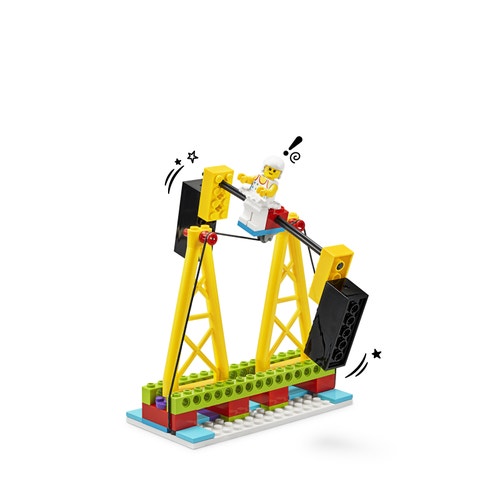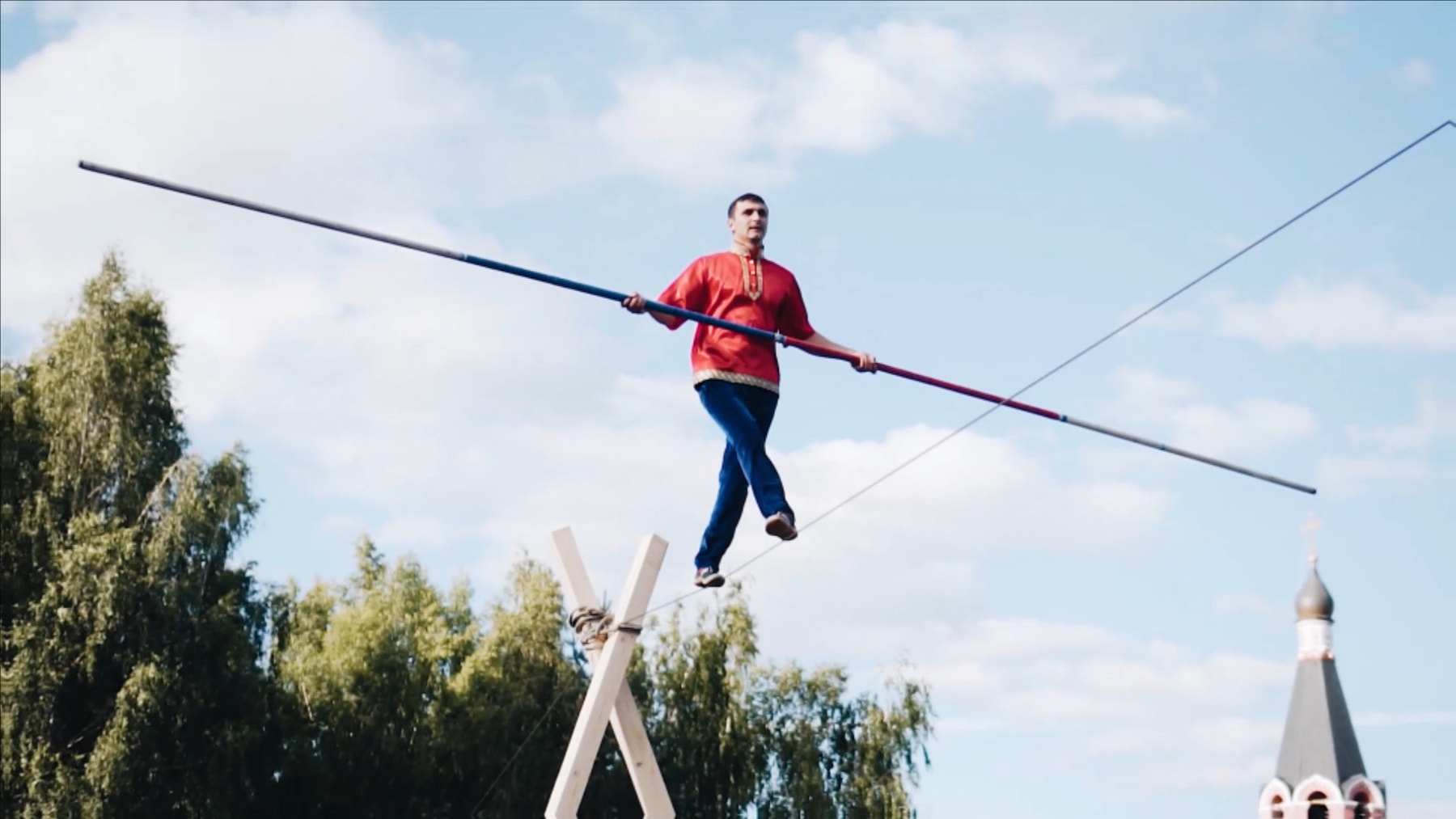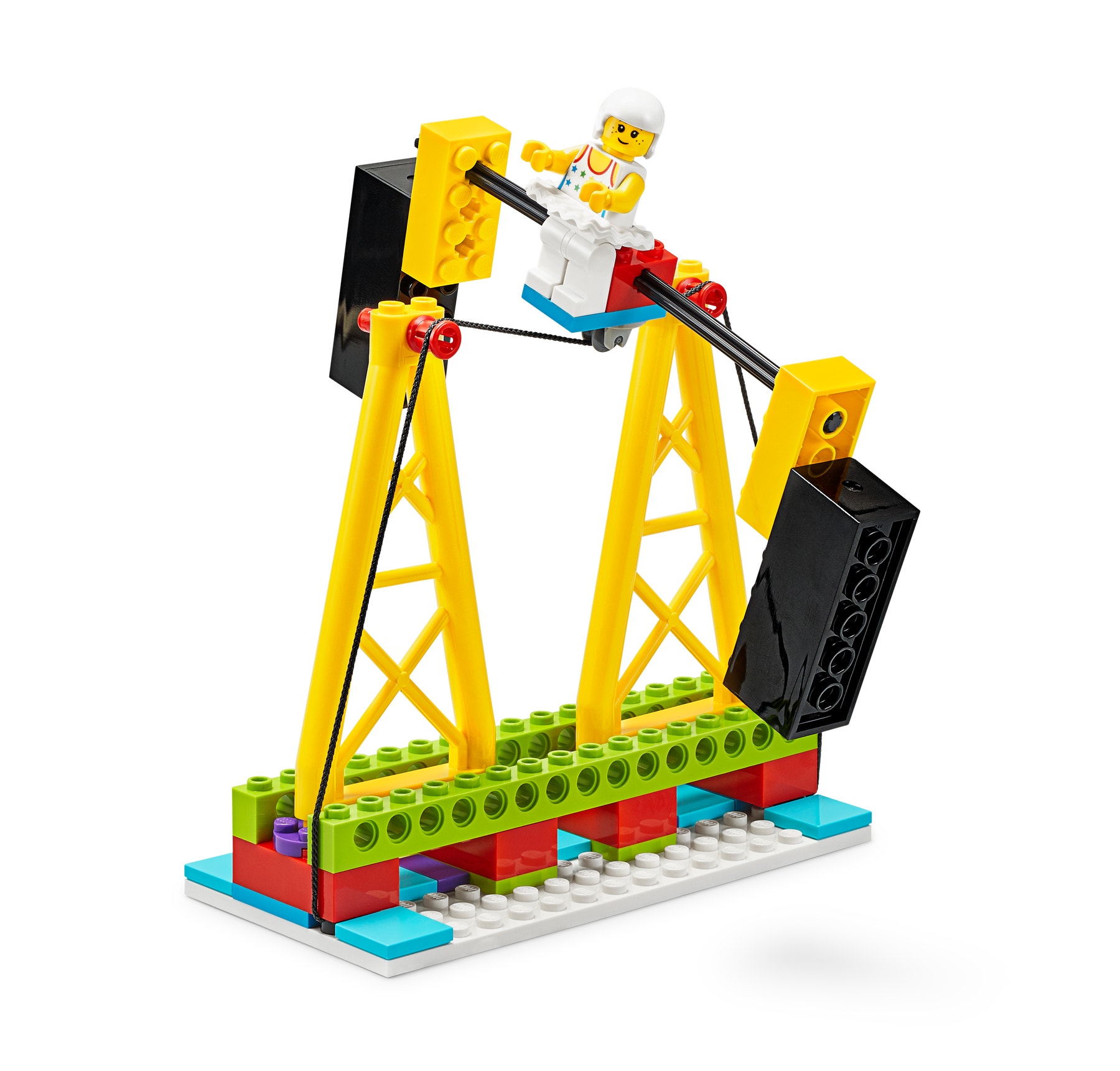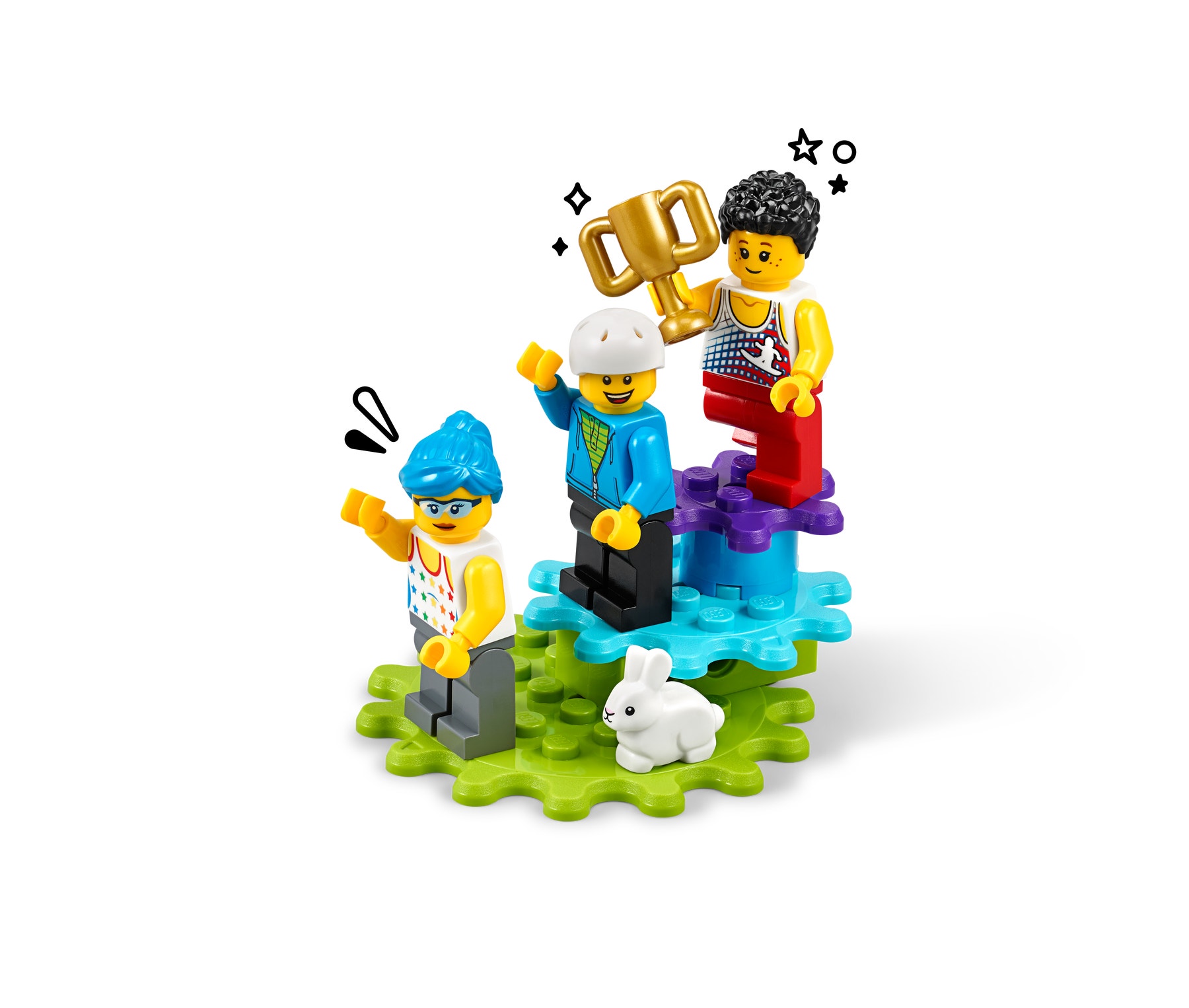BricQ Motion Essential
Tightrope Walker
Build a tightrope and help the tightrope walker keep her center of gravity, so she doesn't fall.
30-45 min.
Intermed.
K-2

Prepare
- Review the online student material. Use a projector to share this material with your students during the lesson.
- Make sure that you've covered the relevant concepts (i.e., balanced and unbalanced forces due to gravity) in an earlier lesson.
- Consider the abilities and backgrounds of all of your students. Differentiate the lesson to make it accessible to everyone. See the Differentiation section below for suggestions.
Engage
(Whole Class, 5 Minutes)
- Watch the student video here, or access it via the online student material.

- Facilitate a discussion about gravity.
- Ask questions, like:
- What's gravity? (It’s a force that pulls everything down to the ground.)
- What's tightrope walking? (The skill of walking along a thin wire or rope.)
- What skill does a tightrope walker need in order to make sure they don't fall? (Good balance.)
- What is it that keeps a tightrope walker "up" on the tightrope? (As long as they stay balanced on top of the rope, the rope pushes up on the walker’s feet to keep them from falling off.)
- Tell students that they'll be building a tightrope.
- Distribute a set to each group.
Explore
(Small Groups, 25 Minutes)
- Have the students work in pairs to build the Tightrope Walker model. Tell them to take turns, one partner searching for the bricks while the other builds, switching roles after each step has been done.
- You can find support for building in the Tips section below.
- When the students have finished building, introduce the test challenge.
- Explain that the students will take turns testing the tightrope walker's center of gravity. They'll slide the weighted bricks along the balance pole or add or remove bricks to either side of the pole to make the walker balanced or unbalanced.
- Ask the students to draw on their Student Worksheets (Teacher Support – Additional Resources). They should note which bricks they've placed on each side of the tightrope walker’s pole, showing how they've made her balanced and unbalanced. Remind them to indicate whether the pole is longer or shorter on one side.

Explain
(Whole Class, 5 Minutes)
- Gather the students together to review and discuss what they've built.
- Ask questions, like:
- What did you notice about the tightrope walker's balance and how it changed when you moved the pole?
- Explain that gravity is the force that pulls the weighted bricks down the tightrope walker's arms or pole. This helps equalize the weight on both sides so she can maintain her center of gravity and not be pulled down, which would make her fall.
Elaborate
(Whole Class, 10 Minutes)
- Ask the students to explore their center of gravity:
- Have them stand on 1 foot, with their other foot close to the ground. Tell them to start raising the foot that's close to the ground to see how long they can stand before losing their balance. Have them try this with their arms at their sides and then again with their arms open wide. Which is easier?
- Choose 1-2 students and ask them to stand on 1 foot with their other foot high off the ground. Then have them try this while holding a book out to their side.
- Ask which way they felt the greatest pull of gravity and which way felt the most balanced.
- Allow time for the students to disassemble their models, sort the bricks back into the trays, and clean up their workstations.
Evaluate
(Ongoing Throughout the Lesson)
- Ask guiding questions to encourage the students to “think aloud” and explain their thought processes and reasoning in the problem-solving decisions they've made when building their models.
Observation Checklist
- Measure your students’ proficiency in describing center of gravity, balanced, and unbalanced forces.
- Create a scale that matches your needs, for example:
- Needs additional support
- Can work independently
- Can teach others
Self-Assessment
- Have each student choose the brick that they feel best represents their performance:
- Green: I think I can describe what "push" and "pull" mean.
- Blue: I know I can describe what "push" and "pull" mean.
- Purple: I can describe and explain what "push" and "pull" mean, and can help a friend understand, too.
Peer-Feedback
- In their small groups, have the students discuss their experiences working as a group.
- Encourage them to use statements like:
- I liked it when you….
- I'd like to hear more about when you….

Tips
Model Tips
- The small wheel on the bottom of the tightrope walker may be hard to find. It’s in the tray with the black and gray elements.
- The small wheel on the tightrope walker is very hard to remove. It doesn't need to be taken apart, so tell your students to leave these elements assembled. Make sure that your students never try to separate elements with their teeth!
- The length of the model's axles is measured in LEGO® studs. Demonstrate how to measure the 16-stud long axle by lining it up with a 16-stud long white plate, highlighting that the axle is 16 studs long.
Differentiation
Simplify this lesson by:
- Having the students perform a test where they place the same bricks on each side of the tightrope walker and then replace them with different bricks to observe the pull of gravity
Increase the difficulty by:
- Challenging your students to make a center of gravity game in which each student chooses the left side or right side of the pole, which is centered to the tightrope walker
- The students take turns choosing 5 brick elements, using them to try and tilt the tightrope walker to their side
- The winners will have chosen and attached the heaviest elements
Extensions
(Note: This will require additional time.)
To incorporate math skills development, have your students work in teams of 2 to write word problems for each other to solve about balancing the tightrope walker.
CCSS.MATH. CONTENT.2.O.A
Teacher Support
Students will:
- Explore the force of gravity and use it to balance a tightrope walker
- LEGO® Education BricQ Motion Essential Sets (one for every two students)
- NGSS K-PS2-2
- ISTE: 7c
- CCSS.ELA-LITERACY.SL.1.2
Lesson extension
- CCSS.MATH. CONTENT.2.O.A




